Cool Craft Ideas for Your Kid’s School Project
Are you ready to dive into a world of creativity with your kids? Crafting is not just about glue and scissors; it’s an exciting journey that encourages imagination and hands-on learning. With school projects looming, it’s the perfect time to explore some cool craft ideas that will not only impress teachers but also foster a love for creativity in your child. Imagine your little one’s face lighting up as they create something unique and special, all while learning valuable skills. Whether your child is a budding artist or just looking to have some fun, these craft ideas are sure to inspire!
Let’s face it, kids thrive when they can express themselves, and what better way to do that than through crafts? The best part is that these projects can be tailored to suit various age groups, ensuring that everyone can join in on the fun! From recycled materials to nature-inspired projects, the possibilities are endless. So, grab your supplies and let’s get crafting!
Using recycled materials for crafts not only promotes sustainability but also sparks creativity. Imagine transforming everyday items like cardboard boxes, plastic bottles, and old magazines into amazing art pieces! The beauty of recycled crafts is that they challenge kids to think outside the box—literally! For instance, a simple cardboard box can become a spaceship, a castle, or even a robot. Here are a few ideas to get you started:
- Cardboard Box Playhouse: Let your child decorate their own playhouse using old boxes, paint, and markers.
- Magazine Collage: Create a colorful collage using cutouts from old magazines to express a theme or tell a story.
- Plastic Bottle Planters: Turn plastic bottles into fun planters for herbs or flowers, teaching kids about gardening.
These projects not only reduce waste but also encourage kids to unleash their creativity in innovative ways. Plus, you’ll be surprised at what they can come up with!
Nature offers endless inspiration for school projects. Imagine taking a stroll outside and gathering leaves, stones, and flowers to create beautiful crafts that celebrate the outdoors. These projects help children connect with nature and learn about the environment in a fun and engaging way. For example, leaf prints can be a fantastic way to explore different leaf shapes while making stunning artwork.
Creating art with leaf prints is not just fun; it’s educational too! Kids can learn about the various types of leaves while expressing their artistic side. To make it even more exciting, you can create a mini gallery at home to showcase their masterpieces. Want to know how to do it? Here’s a simple guide:
Follow these easy steps to create beautiful leaf prints:
- Collect different leaves from your backyard or local park.
- Use paint or ink to coat one side of the leaf.
- Press the leaf onto a piece of paper or canvas.
- Gently lift the leaf to reveal the print!
It’s that simple! Kids will love experimenting with different colors and leaf patterns.
Once the leaf prints are ready, the fun doesn’t stop there! Here are some creative ways to use leaf art:
- Create personalized greeting cards for friends and family.
- Make stunning wall decorations that brighten up any room.
- Design bookmarks that are both functional and beautiful.
These uses not only showcase their creativity but also allow kids to share their work with others.
Stone painting is another simple yet enjoyable craft that allows children to express themselves. Imagine turning ordinary stones into colorful masterpieces! Kids can paint their favorite characters, animals, or even abstract designs. Not only does this craft enhance fine motor skills, but it also gives them a sense of accomplishment when they see their painted stones displayed in the garden or around the house.
Seasonal crafts are a great way to celebrate holidays and changes in nature. Each season brings unique opportunities for creativity. For instance, during spring, kids can create beautiful paper flowers or flower crowns that celebrate the season's beauty. In winter, festive decorations like ornaments and wreaths bring cheer to the home. These projects not only keep kids engaged but also teach them about the significance of different seasons.
Spring is bursting with color, and what better way to embrace it than with flower-themed crafts? Kids can use tissue paper, pipe cleaners, and other materials to create vibrant flowers that can brighten up any space. Imagine a colorful bouquet made entirely by your child!
As the winter holidays approach, engage in festive creativity. Kids will love making ornaments, wreaths, and other crafts that add cheer to the season. These projects can become cherished family traditions, creating lasting memories.
Incorporating STEM concepts into crafts can enhance learning while keeping it fun. Projects that blend science, technology, engineering, and math with creativity provide a well-rounded educational experience. For example, kids can build simple machines using everyday materials, encouraging problem-solving and critical thinking.
Explore how kids can build simple machines using items like cardboard, rubber bands, and marbles. These projects are not only interactive but also instill a sense of achievement as they see their machines come to life.
Combine science experiments with craft projects for a hands-on learning experience. Kids can create colorful volcanoes or homemade slime while learning scientific principles. Imagine the excitement on their faces as they witness a mini eruption or stretch their own slime!
Q: What age group are these craft ideas suitable for?
A: The craft ideas mentioned are suitable for various age groups, from toddlers to pre-teens, with some projects being easily adaptable for older kids.
Q: How can I encourage my child to be more creative?
A: Providing them with a variety of materials and allowing them the freedom to explore their ideas without strict guidelines can greatly enhance their creativity.
Q: Are these crafts messy?
A: Some crafts may involve mess, especially those with paint or glue. It's a good idea to set up a designated crafting area and use old newspapers or a tablecloth to protect surfaces.
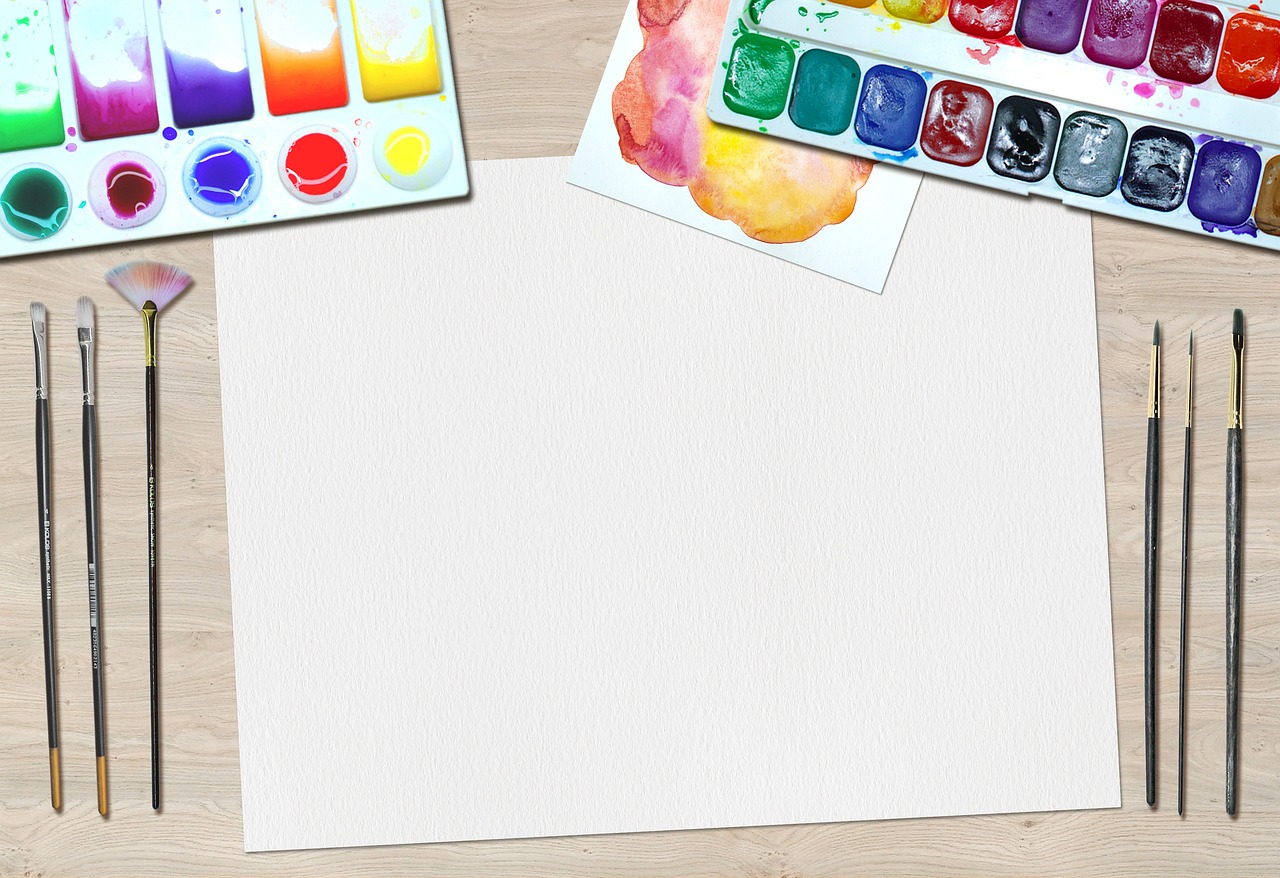
Recycled Materials Crafts
Using recycled materials for crafts not only promotes sustainability but also sparks creativity in your child's mind. Imagine turning an old cereal box into a vibrant castle or transforming plastic bottles into colorful planters. The beauty of recycled crafts is that they allow children to see the potential in everyday items that might otherwise end up in the trash. This approach not only fosters an appreciation for the environment but also encourages innovative thinking. Kids can explore their artistic sides while learning valuable lessons about reusing and repurposing materials.
Here are some fun and easy recycled craft ideas that can inspire your child's next school project:
- Cardboard Creations: Old cardboard boxes can be cut and shaped into anything from robots to houses. All you need is some paint, glue, and a sprinkle of imagination!
- Plastic Bottle Planters: Transform empty plastic bottles into unique planters. Just cut them in half, paint them, and fill them with soil and seeds. Your child will love watching their plants grow!
- Egg Carton Animals: An empty egg carton can be the perfect base for creating cute animals. With a little bit of paint and some googly eyes, you can make a menagerie of critters.
These projects are not only fun but also serve as excellent conversation starters about sustainability and the importance of reducing waste. As your child engages in these activities, they’ll learn to think outside the box—literally! Encourage them to come up with their own unique ideas using recycled materials. Who knows? They might just invent the next big thing!
Moreover, working on recycled crafts can also be a wonderful bonding experience. Gather the family, collect materials, and let everyone contribute their ideas. This collaborative effort can lead to some truly amazing creations, and you'll be amazed at how much fun you can have while being eco-friendly.
In addition to being creative and fun, these crafts can also be educational. They can help children develop skills such as:
| Skill | Description |
|---|---|
| Creativity | Using recycled materials encourages kids to think creatively and come up with innovative solutions. |
| Problem-Solving | Figuring out how to transform an item into something new requires critical thinking and resourcefulness. |
| Fine Motor Skills | Cutting, gluing, and painting help improve hand-eye coordination and dexterity. |
In conclusion, recycled materials crafts are a fantastic way to inspire your child's creativity while teaching them about sustainability. So, gather those old newspapers, empty containers, and scrap materials, and let the crafting begin! With a little imagination, the possibilities are endless, and your child will not only have fun but also create something truly special.
Q1: What types of materials can we use for recycled crafts?
A1: You can use a variety of materials including cardboard, plastic bottles, old newspapers, egg cartons, and even fabric scraps. Just ensure that the materials are clean and safe for children to handle.
Q2: Are recycled crafts suitable for all age groups?
A2: Absolutely! While younger children may require more supervision and assistance, there are plenty of projects that can be adapted for different age levels, making it a fun activity for the whole family.
Q3: How can we ensure that our recycled crafts are environmentally friendly?
A3: Use non-toxic paints and adhesives, and try to incorporate as many recycled materials as possible. Additionally, encourage your child to think about how they can reuse or recycle their finished projects once they are done.
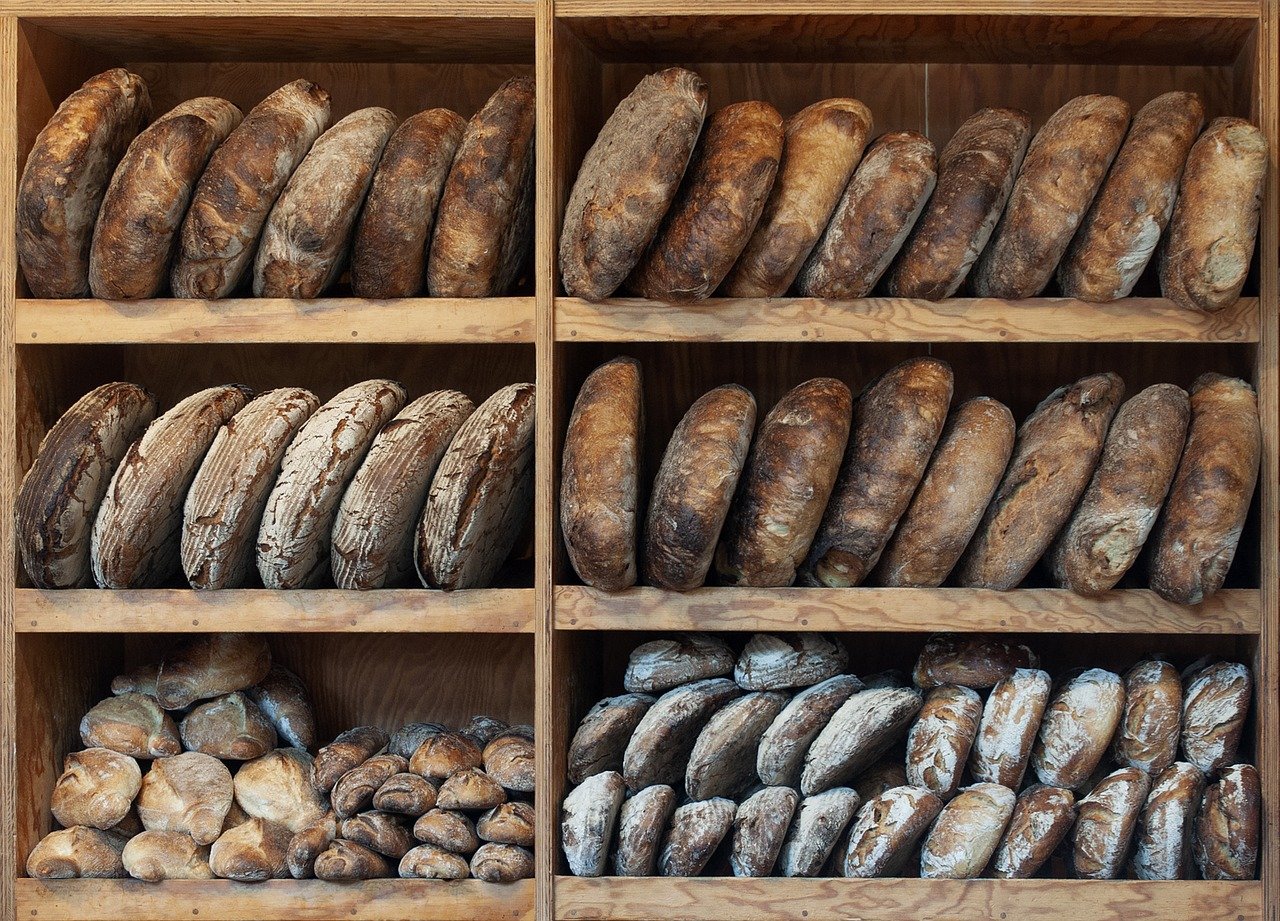
Nature-Inspired Projects
Nature offers an incredible canvas for creativity, and what better way to inspire your child's imagination than through ? These projects not only encourage artistic expression but also foster a deeper appreciation for the environment. Imagine your little one stepping outside, gathering materials, and transforming them into stunning works of art. It's like being an explorer in their own backyard! From leaves and stones to flowers and twigs, the possibilities are endless.
One of the most exciting aspects of nature-inspired crafts is the opportunity to learn about the world around us. For instance, when children collect leaves, they can discover various shapes, sizes, and colors, which can spark discussions about biodiversity. This hands-on experience helps them connect with nature in a way that textbooks simply can't. Plus, it’s a fantastic way to get them moving and engaged outdoors!
Creating art with leaf prints is a fun and educational way to explore nature. Kids can learn about different leaf shapes while making stunning artwork. The process is simple yet rewarding, allowing children to express their creativity while also gaining knowledge about the plants in their environment. To start, all you need are some leaves, paint, and paper. The vibrant colors of the leaves can be transferred onto the paper, creating beautiful impressions that can be framed or used as gifts.
Here's a step-by-step guide on how to create leaf prints:
- Gather a variety of leaves from your garden or local park. Make sure to choose leaves with interesting shapes.
- Prepare your workspace by laying down newspaper or a plastic sheet to protect surfaces.
- Using a paintbrush, apply a thin layer of paint to one side of the leaf.
- Carefully press the painted leaf onto a piece of paper and apply gentle pressure.
- Lift the leaf to reveal the print. Repeat with different leaves and colors!
Once the leaf prints are dry, the fun doesn't stop there! Kids can use their creations in various ways:
- Create personalized greeting cards for friends and family.
- Make wall decorations by framing the prints.
- Use the prints as unique wrapping paper for gifts.
These projects not only showcase your child's creativity but also allow them to share their work with others, making it a delightful experience for everyone involved.
Stone painting is another simple yet enjoyable craft that allows children to express themselves. By turning ordinary stones into colorful masterpieces, kids can unleash their inner artists. This activity is particularly great because it encourages them to think outside the box. Just imagine a collection of vibrant stones scattered around your garden or home, each telling a different story! Stone painting is also an excellent way to promote fine motor skills and hand-eye coordination.
To get started, all you need are some smooth stones, acrylic paint, and brushes. Kids can paint anything from their favorite animals to abstract designs. Once the stones are dry, they can be displayed in the garden, used as paperweights, or even gifted to friends. It's a wonderful way to bring a bit of color and creativity into everyday life.
In summary, nature-inspired projects not only provide a creative outlet for kids but also help them learn about the environment in a fun and engaging way. By incorporating elements from the outdoors, children can develop a lifelong appreciation for nature while creating beautiful art pieces that reflect their unique perspectives.
Q: What materials do I need for nature-inspired projects?
A: Basic materials include leaves, stones, flowers, paint, brushes, and paper. You can also use recycled items like cardboard and plastic bottles for additional creativity.
Q: How can I encourage my child to explore nature?
A: Take them on nature walks, encourage them to collect interesting items, and provide them with tools for exploration, like magnifying glasses or notebooks for sketching.
Q: Are these projects suitable for all age groups?
A: Yes! You can adapt the complexity of the projects based on your child's age and skill level. Younger kids can focus on simple tasks, while older children can take on more intricate designs.

Leaf Prints and Art
Creating art with leaf prints is not just a fun craft; it’s an exciting way for kids to connect with nature and learn about the world around them. Imagine your child stepping outside, picking up leaves of various shapes and sizes, and then transforming them into stunning pieces of art! This process not only fosters creativity but also teaches them about the different types of leaves and their unique characteristics. It’s like bringing a piece of the forest right into your living room!
To get started with leaf printing, you don’t need much—just some leaves, paint or ink, and paper. The beauty of this craft lies in its simplicity. Kids can explore the textures and patterns of leaves while having a blast creating their own masterpieces. Plus, it’s a fantastic opportunity for them to express their individuality. Each print will be unique, just like them!
Here’s a straightforward guide to help your little ones create their own leaf prints:
- Gather Materials: Collect leaves, paint (or ink), a paintbrush, and paper. You might also want some newspaper to protect your workspace.
- Prepare the Leaves: Make sure the leaves are clean and dry. If they are too wet, the paint won’t stick.
- Apply Paint: Using a brush, apply a thin layer of paint onto one side of the leaf. You can use multiple colors for a more vibrant print!
- Press and Print: Carefully place the painted side of the leaf onto the paper and press down gently. You can use your fingers or a roller for even pressure.
- Reveal the Art: Carefully lift the leaf away to reveal the print. Let it dry, and then you can add additional decorations if desired.
This method is not only easy but also makes for a wonderful educational experience. Kids can learn about leaf anatomy, different species, and even the changing seasons as they create their art. Plus, they can experiment with different colors and techniques, making each print a unique expression of their creativity!
Once the leaf prints are dry, the fun doesn’t have to stop there! There are countless ways to utilize this beautiful artwork:
- Greeting Cards: Transform your leaf prints into one-of-a-kind greeting cards for birthdays or special occasions. A personal touch always makes a gift more meaningful!
- Wall Decorations: Frame the prints or hang them on a clothesline for a charming display in your child’s room or around the house.
- Gift Wrap: Use the prints as unique wrapping paper for gifts, adding a personal touch that family and friends will love.
Incorporating leaf prints into various projects not only showcases your child’s creativity but also encourages them to appreciate the beauty of nature. It’s a win-win situation where they learn, create, and have tons of fun!
Q: What types of leaves work best for printing?
A: Generally, leaves with a lot of texture, such as maple or oak, work best. However, feel free to experiment with any leaves you find!
Q: Can we use markers instead of paint?
A: Absolutely! Markers can work well for detailed designs and are easier for younger children to handle.
Q: How do we clean up after the project?
A: Make sure to wash your brushes and any surfaces with soap and water right after the craft to prevent paint from drying on them.
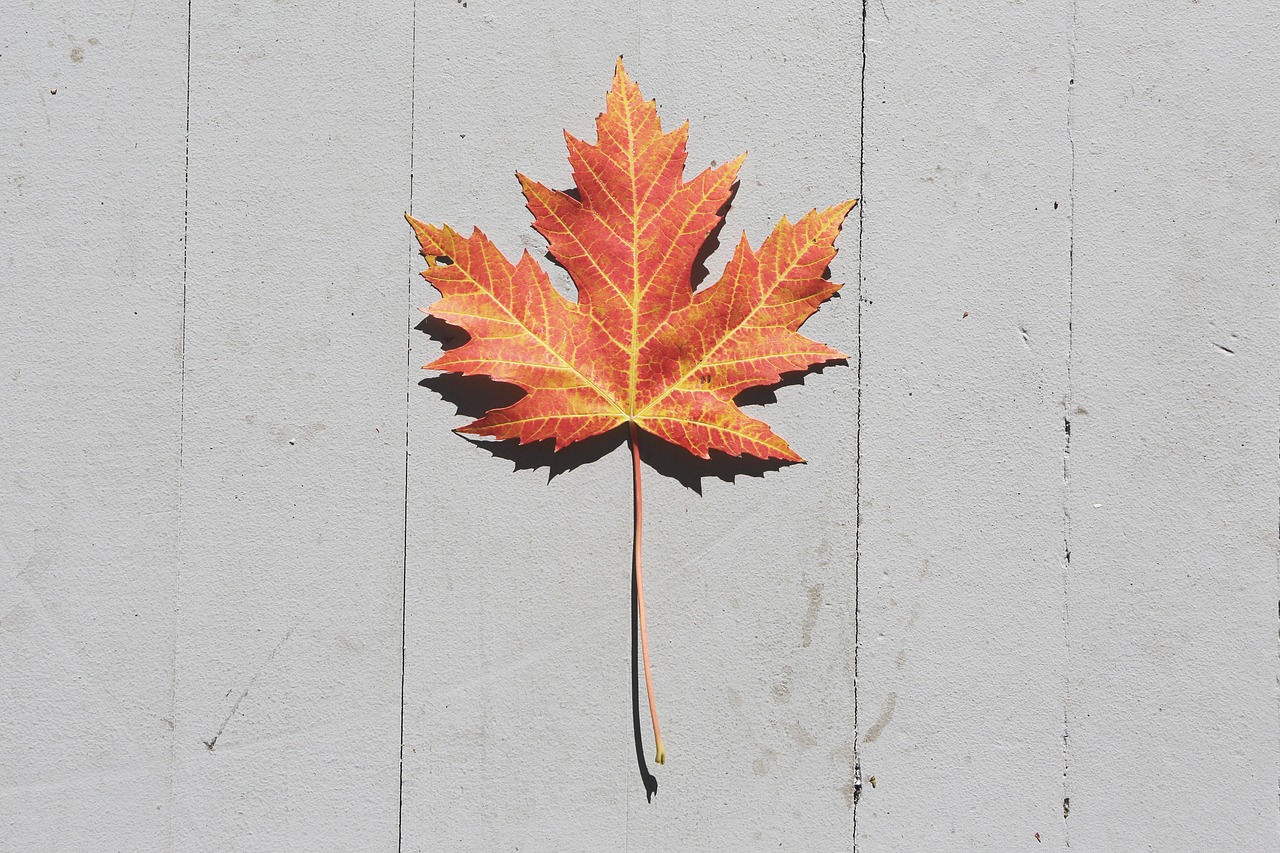
How to Make Leaf Prints
Making leaf prints is not just a fun activity; it’s a fantastic way for your child to connect with nature while exploring their artistic side. This process is simple and requires minimal materials, making it perfect for a school project or a weekend activity. To get started, you will need some fresh leaves, paint or ink, and paper. The beauty of leaf printing lies in the unique patterns and textures that each leaf can create, so encourage your child to experiment with different types of leaves from your backyard or local park.
Here's a simple step-by-step guide to help you create stunning leaf prints:
- Gather Materials: Collect a variety of leaves, some paint or ink, and a sheet of paper. You might also want to have a paintbrush and a tray for the paint.
- Prepare the Leaves: Choose leaves that have interesting shapes and veins. Wash them gently to remove any dirt.
- Paint the Leaves: Use a paintbrush to apply a thin layer of paint or ink onto the surface of the leaves. Make sure to cover the entire leaf evenly.
- Press and Print: Place the painted leaf face down onto the paper. Press down firmly but gently to transfer the paint. You can use a rolling pin or your hands to ensure an even print.
- Reveal the Art: Carefully lift the leaf off the paper to reveal your print. You’ll be amazed at the intricate details that come through!
- Let it Dry: Allow the prints to dry completely before handling them further. You can then frame your artwork or use it in other creative projects.
This activity not only nurtures creativity but also teaches kids about the different types of leaves and their characteristics. It’s a wonderful blend of art and science! You might even consider taking a nature walk to find various leaves before you start printing, making it a fun outing that combines learning with creativity.
After making leaf prints, your child can use them in various ways. For instance, they can create personalized greeting cards, decorate their room, or even make a scrapbook dedicated to their nature-inspired art. The possibilities are endless, and the joy of creating something unique will boost their confidence and inspire them to continue exploring their artistic talents.
Q: Can we use any type of leaves for printing?
A: Yes, you can use a variety of leaves! However, thicker leaves with prominent veins work best as they hold more paint and create clearer prints.
Q: What kind of paint is best for leaf printing?
A: Acrylic paint or washable tempera paint are great choices. They provide good coverage and are easy to clean up.
Q: How do we clean the leaves after use?
A: After printing, you can gently rinse the leaves under water to clean off any excess paint. Just be careful not to damage them!
Q: Can we use leaf prints for other crafts?
A: Absolutely! Leaf prints can be used in various crafts, including collages, decorations, or even as part of a larger art project.
So gather those leaves, unleash your creativity, and enjoy the wonderful world of leaf printing!
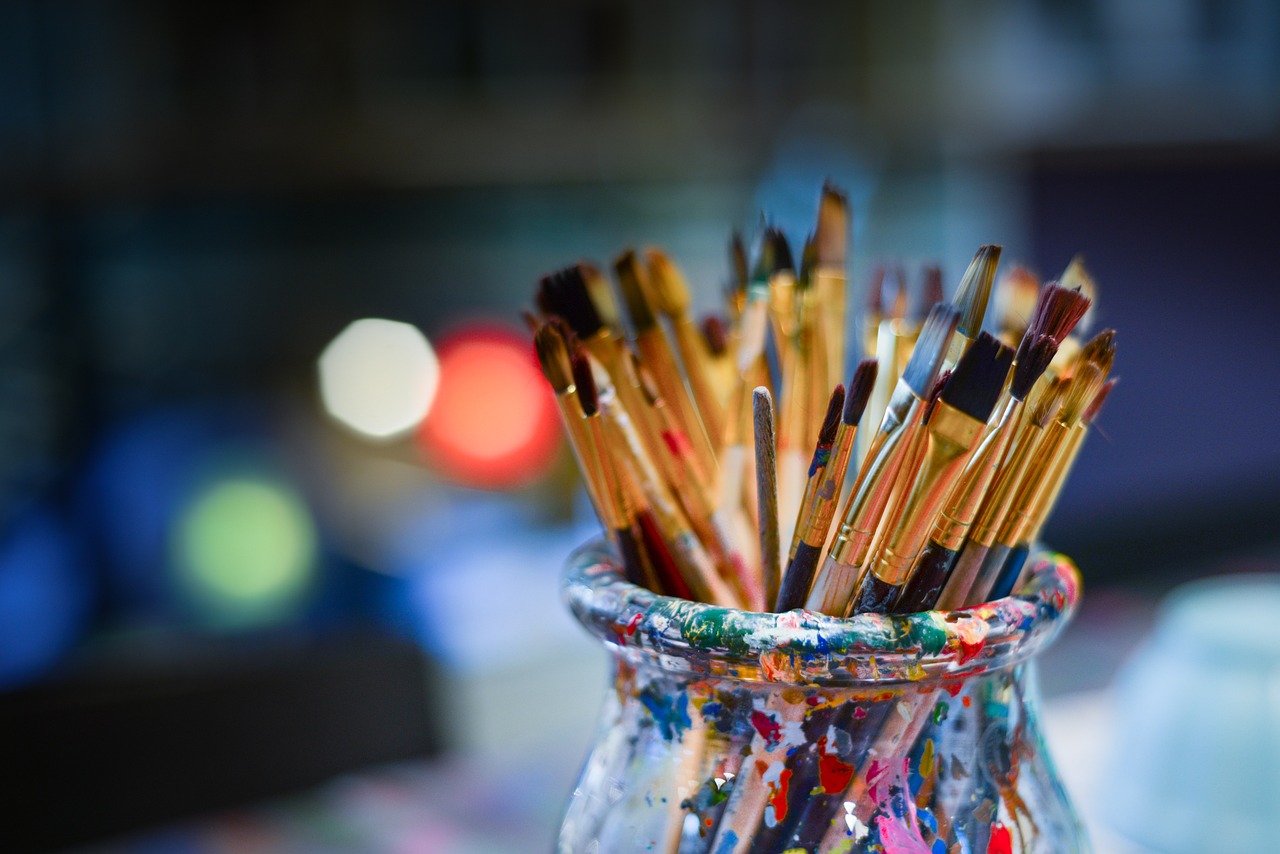
Creative Uses for Leaf Art
Leaf art is not just a fun activity; it opens up a world of creativity and potential uses that can inspire your child’s imagination. Once those vibrant leaf prints are made, the possibilities are endless! Imagine transforming a simple piece of paper into a heartfelt greeting card that can brighten someone's day. Kids can take their leaf prints and fold them into unique cards, adding a personal touch that family and friends will cherish. It's like giving a piece of nature wrapped in love!
Additionally, leaf art can be used to create stunning wall decorations. By framing their artwork, children can showcase their creativity in their rooms or even in common areas of the house. This not only boosts their confidence but also instills a sense of pride in their work. You can even create a gallery wall featuring various leaf art pieces, which can serve as a conversation starter for guests.
Moreover, leaf prints can be incorporated into scrapbooking projects. Kids love to document their experiences, and adding leaf art to their scrapbook pages can enhance the theme of nature and outdoor adventures. It’s a wonderful way to preserve memories while fostering creativity. Think of it as a visual diary where every leaf tells a story!
Another creative use is to turn leaf art into gift wrap. Instead of using traditional wrapping paper, children can use their leaf prints to wrap gifts. This eco-friendly option not only looks beautiful but also adds a personal touch to any present. Imagine the delight on a friend’s face when they receive a gift wrapped in unique, handmade leaf art!
Finally, leaf art can be utilized in educational projects. For example, children can create a nature-themed poster that combines leaf prints with information about different types of trees and plants. This not only reinforces their learning about nature but also encourages them to explore and research further. It’s a fantastic way to blend art with education!
In summary, leaf art is a versatile craft that can lead to numerous creative applications. Whether it's through greeting cards, wall decorations, scrapbooking, gift wrapping, or educational projects, the joy of creating with leaves can be extended far beyond the initial craft. So, let your child's imagination run wild and watch as they discover new ways to express themselves through their leaf art!
Q1: What materials do we need to create leaf art?
A1: To create leaf art, you will need leaves, paint or ink, paper, and optionally, a brayer or sponge for applying paint. You can also use a paintbrush for more detailed designs.
Q2: Can we use any type of leaves for leaf printing?
A2: Yes, you can use any leaves, but it's best to choose leaves with interesting shapes and textures. Experimenting with different types of leaves can lead to unique prints!
Q3: How can we preserve leaf art once it's created?
A3: To preserve leaf art, consider framing it under glass or using a spray sealant to protect the artwork from fading and damage. Storing it in a portfolio can also help keep it safe.
Q4: Are there any other crafts we can do with leaves besides printing?
A4: Absolutely! You can create leaf rubbings, leaf collages, or even use dried leaves for other crafts like making bookmarks, decorations, or nature journals.
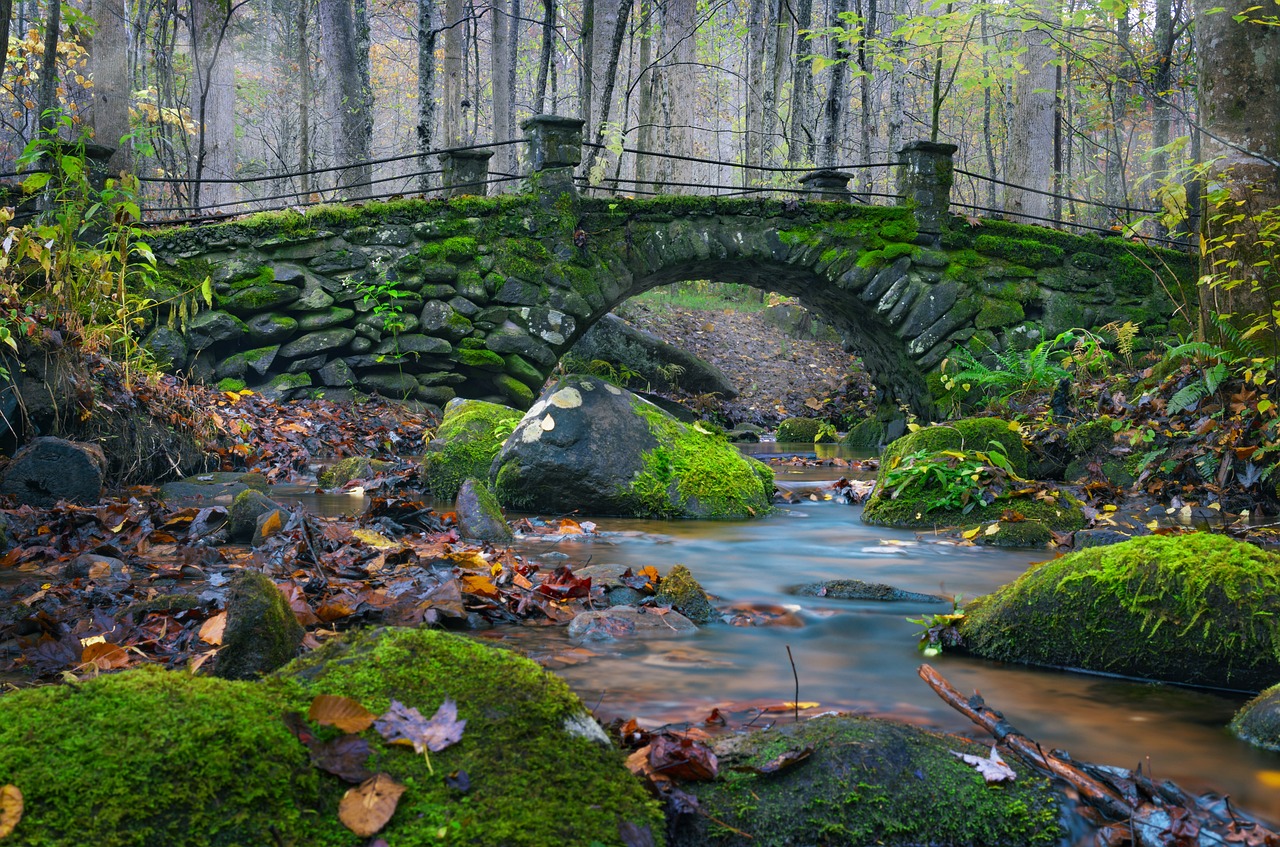
Stone Painting
Stone painting is not just a craft; it's a delightful way for children to express their creativity while engaging with nature. Imagine walking through a park and spotting vibrant, hand-painted stones nestled among the grass or lining a garden path. These colorful masterpieces bring joy not only to the creators but also to those who stumble upon them. Plus, the best part? It's incredibly simple and requires minimal materials!
To get started with stone painting, all you need are some smooth stones, acrylic paints, and brushes. You might even want to include some sealant to protect the artwork from the elements. This craft is perfect for kids of all ages, as it allows them to explore their imagination without the constraints of a strict project outline. They can paint their favorite animals, create abstract designs, or even write positive messages to spread cheer in their community.
One of the most exciting aspects of stone painting is that it encourages kids to observe their surroundings. While searching for the perfect stones, they can explore different textures and shapes, fostering a deeper connection with nature. After collecting their stones, kids can sit down with friends or family to brainstorm design ideas. This collaborative aspect not only makes the activity more enjoyable but also enhances social skills and teamwork.
Here’s a simple step-by-step guide to get your child started on their stone painting adventure:
- Gather Materials: Collect smooth stones, acrylic paints, brushes, and a sealant.
- Clean the Stones: Rinse the stones with water to remove dirt and let them dry completely.
- Plan Your Design: Sketch out ideas on paper before painting to visualize the final product.
- Paint the Stones: Use brushes to apply acrylic paint, layering colors for depth and interest.
- Seal the Artwork: Once dry, apply a sealant to protect the paint from fading or chipping.
After the stones are painted and sealed, they can be used in various ways. Kids can place them in their gardens, give them as gifts, or even hide them around the neighborhood for others to find—a fun little scavenger hunt! This not only promotes creativity but also encourages kindness and community spirit.
Stone painting is more than just a fun activity; it’s a gateway to learning about art, nature, and the joy of sharing. So, gather some stones and let your child’s imagination run wild! Who knows, they might just create the next masterpiece that brightens someone’s day.
Q: What type of stones are best for painting?
A: Smooth, flat stones work best as they provide a nice surface for painting. River stones or garden stones are ideal choices.
Q: Can I use any type of paint?
A: Acrylic paint is recommended because it adheres well to stone and is weather-resistant when sealed. Avoid using watercolors as they may wash away.
Q: How can I display my painted stones?
A: You can place them in a garden, create a decorative bowl, or even use them as paperweights. The options are endless!
Q: Is this activity safe for young children?
A: Yes, as long as they are supervised, stone painting can be a safe and enjoyable activity. Just be sure to use non-toxic materials.

Seasonal Crafts
Seasonal crafts are an exciting way to celebrate the changing seasons and the various holidays that come with them. They not only allow kids to express their creativity but also help them learn about the world around them. With each season, there are unique materials and themes that can be explored, making crafting an engaging and educational experience. From the blooming flowers of spring to the cozy decorations of winter, every season offers a treasure trove of inspiration for fun projects.
For instance, during spring, children can immerse themselves in the vibrant colors and scents of the season. Crafting with flowers is a fantastic way to connect with nature. Kids can create beautiful paper flowers that can brighten up any room or even make flower crowns to wear during outdoor play. The process of making these crafts not only allows them to appreciate the beauty of spring but also enhances their fine motor skills as they cut, glue, and assemble their creations.
As we transition into summer, the opportunities for crafting expand with the abundance of natural materials available. Kids can collect seashells, pebbles, or even leaves to create stunning summer-themed art pieces. Crafting with these materials encourages them to explore their environment while learning about the different textures and colors found in nature. Imagine transforming a simple stone into a colorful beach-themed decoration that can be displayed proudly at home!
Then comes autumn, a season bursting with rich colors and textures. This is the perfect time for kids to engage in crafts that celebrate the changing leaves and the harvest season. They can create leaf collages or even carve pumpkins for Halloween. These activities not only foster creativity but also provide an opportunity for kids to learn about the significance of these seasonal changes and the traditions associated with them.
Finally, winter brings a festive spirit that can be captured through various craft projects. Kids can make homemade ornaments, wreaths, and even festive cards to send to friends and family. Engaging in these crafts not only enhances their artistic skills but also fosters a sense of community and sharing. Plus, what could be more rewarding than seeing their handmade creations adorning the family tree or being given as gifts?
In summary, seasonal crafts are a wonderful way for children to explore their creativity while learning about the world around them. Each season comes with its own unique set of materials and themes, making it easy to find inspiration no matter the time of year. So, gather your supplies and get ready to embark on a crafting adventure that celebrates the beauty of each season!
Q: What materials do I need for seasonal crafts?
A: The materials can vary depending on the season. Common items include paper, glue, scissors, natural elements (like leaves and flowers), paints, and any craft supplies you have at home. Be creative and use what you can find!
Q: Are seasonal crafts suitable for all age groups?
A: Absolutely! Seasonal crafts can be adapted to suit different age groups. Younger children can enjoy simple projects with supervision, while older kids can take on more complex crafts that require critical thinking and problem-solving skills.
Q: How can I incorporate educational elements into seasonal crafts?
A: You can incorporate educational elements by discussing the significance of the season, the materials used, and the skills involved in crafting. For example, while making leaf prints, talk about the different types of trees and their leaves, or while crafting with shells, discuss marine life.
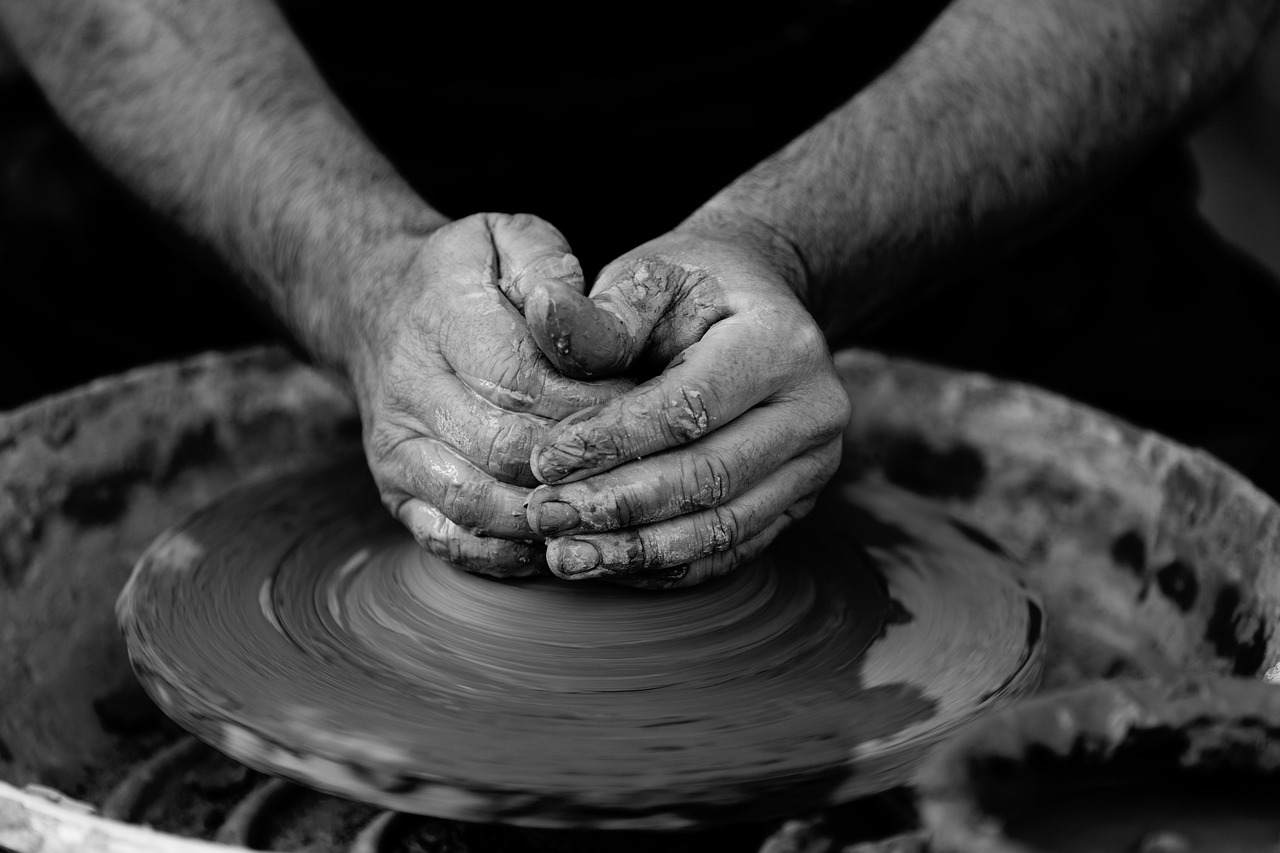
Spring Flower Crafts
Spring is a time of renewal and vibrant colors, making it the perfect season for kids to get creative with flower-themed crafts. As the flowers begin to bloom and the world comes alive, children can channel their excitement into crafting beautiful pieces that celebrate this joyful season. Not only are these crafts fun, but they also provide an excellent opportunity for kids to learn about nature, colors, and even some basic crafting techniques.
One delightful project is making paper flowers. This craft is incredibly versatile, allowing kids to experiment with different shapes, sizes, and colors. All you need are some colored papers, scissors, and glue. Kids can cut out petal shapes and assemble them into stunning flowers that can be displayed in their rooms or given as gifts. To make it even more engaging, you can incorporate a little science by discussing how real flowers grow and the different parts of a flower. This way, the crafting becomes a fun learning experience!
Another fantastic idea is to create flower crowns. Kids can use natural materials like dandelions, clovers, and wildflowers to weave together their own beautiful crowns. This not only connects them to nature but also encourages them to explore their surroundings. Imagine your child proudly wearing a crown made of freshly picked flowers, feeling like royalty while enjoying the great outdoors! To make the crowns, simply gather some flexible stems, attach the flowers, and secure them with twine or string. It’s a simple yet enchanting craft that can spark joy and creativity.
For a more artistic approach, consider painting flower pots. This project allows children to express their artistic side while also being practical. Kids can paint terracotta pots with bright colors and fun designs, making them unique and personal. Once the pots are painted, you can plant some flowers or herbs together, teaching kids about planting and caring for plants. This combination of crafting and gardening not only beautifies your home but also instills a sense of responsibility in children as they watch their plants grow.
In addition to these crafts, you can also host a spring flower craft party. Invite friends over for a fun-filled day of creativity! Set up different crafting stations where kids can rotate and try their hand at various flower crafts. This way, they can share ideas, collaborate, and inspire each other. Plus, it’s an excellent opportunity for social interaction and teamwork!
To wrap up the spring flower crafts, here’s a quick table summarizing some of the craft ideas and their materials:
| Craft Idea | Materials Needed | Learning Outcome |
|---|---|---|
| Paper Flowers | Colored paper, scissors, glue | Creativity, fine motor skills |
| Flower Crowns | Natural flowers, flexible stems, twine | Nature appreciation, teamwork |
| Painted Flower Pots | Terracotta pots, paint, brushes | Artistic expression, responsibility |
Engaging in spring flower crafts not only nurtures creativity but also fosters a deeper connection with nature. So, gather your materials, roll up those sleeves, and let the crafting begin! Your child will not only have a blast but will also have beautiful creations that embody the spirit of spring.
Q1: What age group are these crafts suitable for?
A1: These crafts are suitable for children aged 4 and up, with adult supervision for younger kids, especially when using scissors or paint.
Q2: Can these crafts be done indoors?
A2: Yes, many of these crafts can be done indoors, particularly paper flowers and painted pots. Just make sure to cover surfaces to avoid mess!
Q3: How can I incorporate educational elements into these crafts?
A3: You can discuss the parts of a flower, the importance of pollinators, or even the growth process of plants while crafting. This makes it both fun and educational!

Winter Holiday Decorations
As the winter season approaches, it brings with it a sense of joy and warmth, making it the perfect time for kids to unleash their creativity through festive crafts. Winter holiday decorations not only brighten up your home but also provide a wonderful opportunity for children to engage in hands-on activities that foster imagination and teamwork. Imagine the sparkle in your child’s eyes as they create their very own ornaments, wreaths, and garlands that will become cherished family traditions!
One of the most delightful aspects of winter holiday decorations is that they can be made using a variety of materials, both store-bought and recycled. For instance, old magazines can be transformed into colorful paper chains, while pinecones collected from the backyard can become stunning centerpieces when painted and adorned with glitter. The possibilities are endless, and each craft can be a unique expression of your child's personality.
To kick off the crafting fun, consider making homemade ornaments. This classic project can be adapted for children of all ages. For younger kids, you can use salt dough to create simple shapes—think stars, trees, or even their handprints! Just mix flour, salt, and water, roll it out, cut out your shapes, and bake them until hard. Once cooled, let the kids paint and decorate them with glitter, sequins, or markers. Not only do these ornaments look beautiful on the tree, but they also hold sentimental value as keepsakes of your child’s artistic journey.
For older children, you might want to explore more intricate designs, such as glass ball ornaments. These can be filled with colorful beads, faux snow, or even tiny pictures. Simply remove the top of the ornament, fill it with your chosen materials, and replace the top. Kids will love the surprise element of creating something beautiful from simple, everyday items.
Another fantastic winter decoration project is making holiday wreaths. Using a wire frame or even a sturdy cardboard circle, kids can glue on an array of materials such as dried orange slices, cinnamon sticks, and pine needles to create a natural look. They can also use ribbons and bows to add a pop of color. This project not only beautifies your front door but also gives kids a sense of accomplishment as they see their hard work displayed prominently for all to see.
Lastly, don’t forget about garlands. These can be made from popcorn, cranberries, or even paper cutouts. Kids can string them together using thread or yarn, and the finished product can be draped over mantels, staircases, or around windows. This is a fun way to involve the whole family, as everyone can contribute their own unique touch to the garland.
In conclusion, winter holiday decorations are not just about beautifying your home; they are about creating lasting memories and traditions with your children. As they engage in these creative projects, they learn valuable skills such as planning, problem-solving, and fine motor skills. Plus, the joy of seeing their creations displayed around the house will instill a sense of pride and accomplishment that lasts through the festive season and beyond.
- What materials do I need for winter holiday decorations? You can use a variety of materials including paper, fabric, natural elements like pinecones and leaves, as well as recycled items like old ornaments and magazines.
- Are these crafts suitable for all ages? Yes! You can adapt the complexity of the projects based on your child's age and skill level.
- How can I make these decorations last for years? Using durable materials and proper storage techniques can help preserve your decorations. Consider using sealants or laminating paper crafts.
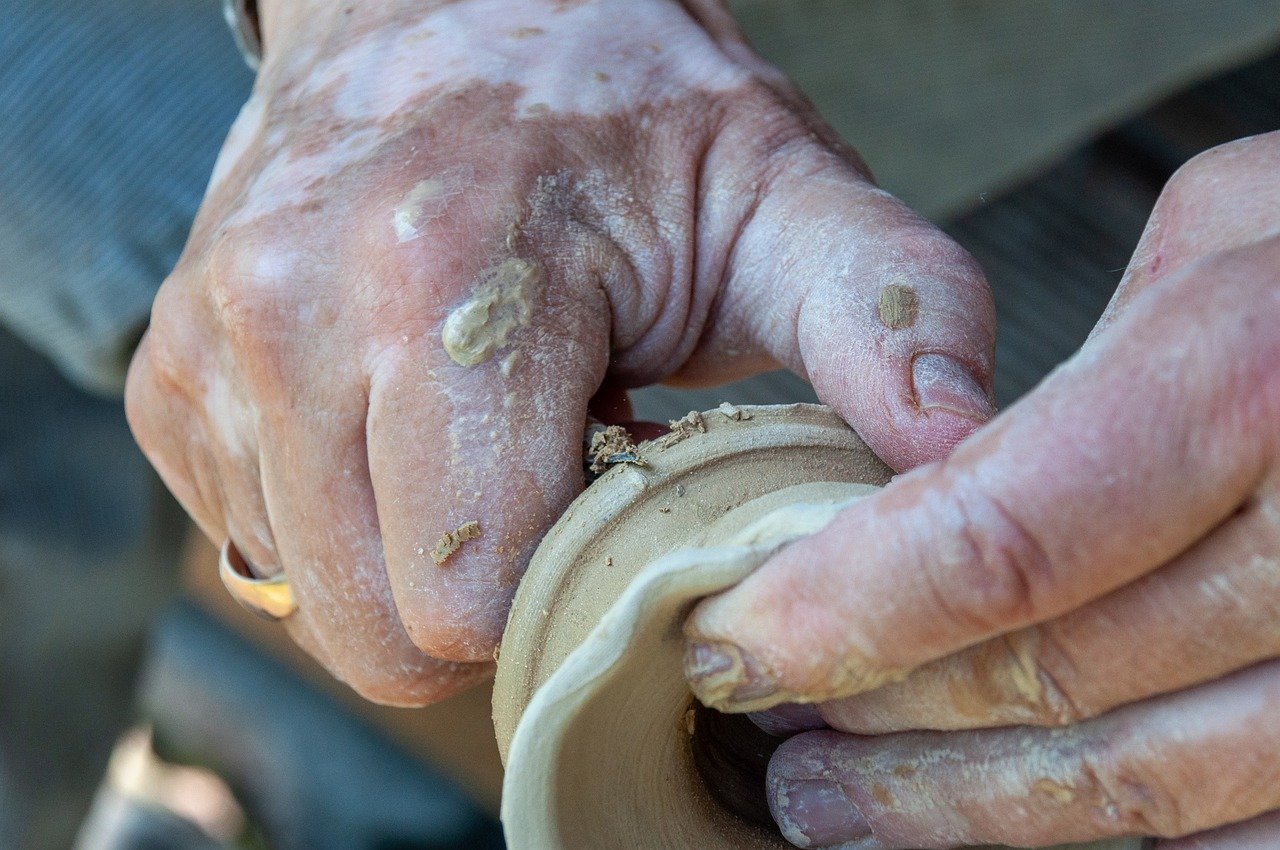
STEM-Based Craft Ideas
In today's world, blending creativity with education is more critical than ever, and what better way to do this than through ? These projects not only engage kids in fun activities but also introduce them to essential concepts in science, technology, engineering, and mathematics. Imagine your child building a simple machine or conducting a vibrant science experiment right in your living room! These hands-on experiences can ignite a lifelong passion for learning and exploration.
One of the most exciting aspects of STEM crafts is that they often use everyday materials you already have at home. This makes it easy to dive into projects without needing a long shopping list. For example, you can use items like cardboard boxes, plastic bottles, and kitchen supplies to create engaging and educational crafts. Not only is this a budget-friendly approach, but it also teaches kids about sustainability and resourcefulness.
Let's explore a couple of fantastic STEM-based craft ideas that you can easily implement with your child. These projects are designed to encourage problem-solving and critical thinking skills while providing a fun and interactive experience.
Building simple machines is a fantastic way to introduce children to basic engineering principles. Using materials like popsicle sticks, rubber bands, and toilet paper rolls, kids can construct a variety of machines, such as levers, pulleys, and catapults. Not only will they have fun building these devices, but they'll also learn how these machines work and the science behind them. For instance, when creating a catapult, children will discover concepts of force and motion as they launch small objects across the room.
Here’s a simple activity to get started:
1. Gather materials: popsicle sticks, rubber bands, and a small plastic spoon. 2. Create a base using popsicle sticks. 3. Attach the spoon to one end of the base using a rubber band. 4. Test your catapult by launching small items like marshmallows or pom-poms!
Combining science experiments with crafts is another exciting way to engage kids. Imagine creating a colorful volcano that erupts right in your kitchen! This type of project not only reinforces scientific principles but also encourages children to think critically about the results of their experiments. For example, when making a volcano, kids can learn about chemical reactions by mixing baking soda and vinegar. The fizzing eruption is not only visually stunning but also a great way to discuss the reaction that occurs.
Another fun experiment is making homemade slime. This gooey craft is not only enjoyable to play with but also teaches kids about polymers and viscosity. Here’s how to make it:
1. Mix 1 cup of glue with 1 cup of water in a bowl. 2. Add food coloring for a fun twist. 3. In a separate bowl, mix 1 teaspoon of borax with 1 cup of warm water. 4. Combine both mixtures and watch the slime form!
By engaging in these STEM-based crafts, kids can explore the intersection of creativity and education while enjoying hands-on learning experiences. The possibilities are endless, and the skills they develop will serve them well in the future.
Q: What age group are these STEM crafts suitable for?
A: These crafts are designed for a wide range of age groups, from young children to pre-teens. Adjust the complexity of the projects based on your child's age and skill level.
Q: Do I need special materials for these crafts?
A: Not at all! Most materials can be found around your home. Common items like cardboard, glue, and basic kitchen supplies are often all you need.
Q: How can I encourage my child to explore further?
A: Encourage your child to ask questions during the projects and explore variations of the crafts. For example, after building a catapult, challenge them to see how far they can launch different objects and discuss why some go farther than others.

Building Simple Machines
Building simple machines is a fantastic way for kids to dive into the world of engineering while having a blast! Imagine your child transforming everyday items into exciting projects that not only entertain but also educate. Simple machines, such as levers, pulleys, and inclined planes, are the building blocks of more complex machinery. They help kids grasp fundamental concepts of physics and mechanics through hands-on experience. But how do you get started? Let’s explore some engaging project ideas and the science behind them!
One of the most exciting aspects of building simple machines is that you don’t need fancy materials or tools. In fact, you can utilize common household items to create amazing projects. For instance, a lever can be made using a sturdy ruler and a small block as a fulcrum. By placing different weights on either end of the ruler, kids can experiment with balance and force, learning about the principles of leverage. This not only sparks curiosity but also encourages problem-solving skills as they figure out how to make their designs work.
Another great project is constructing a pulley system using a few items like string, a plastic cup, and a couple of small weights. Kids can learn how pulleys can change the direction of force, making it easier to lift heavy objects. This is a perfect opportunity to discuss real-world applications, such as how cranes operate on construction sites. By engaging in these hands-on activities, children can see the direct relationship between the concepts they're learning and their practical applications.
To help organize your crafting session, here’s a simple table outlining some materials you might need for various simple machine projects:
| Simple Machine | Materials Needed | Learning Outcome |
|---|---|---|
| Lever | Ruler, block, weights | Understanding balance and force |
| Pulley | String, cup, weights | Learning about force direction |
| Inclined Plane | Board, books, toy car | Exploring how ramps reduce effort |
In addition to building these machines, you can encourage your child to document their process. They can take notes on what works, what doesn’t, and how they can improve their designs. This not only reinforces their learning but also fosters creativity and innovation. Perhaps they could even create a mini-presentation to share their findings with family or classmates, making it a fun and interactive experience!
Lastly, don’t forget to celebrate their achievements! Whether they successfully build a working model or encounter challenges along the way, the learning journey is what truly matters. Encourage them to keep experimenting and exploring the wonders of simple machines, as this foundational knowledge will serve them well in future STEM endeavors.
Q: What age group is suitable for building simple machines?
A: Typically, children aged 6 and up can begin exploring simple machines with adult supervision. The complexity of the projects can be adjusted based on age and skill level.
Q: Do I need special tools to create these projects?
A: No, most projects can be completed with common household items. Basic tools like scissors, tape, and glue are often sufficient.
Q: How can I make this activity more educational?
A: Consider integrating discussions about physics concepts, encouraging kids to hypothesize before they build, and having them explain their projects to others.

DIY Science Experiments as Crafts
Combining science experiments with crafts is like mixing peanut butter and jelly—two amazing things that come together to create something even better! These projects not only ignite curiosity but also provide a hands-on learning experience that kids will love. Imagine your child creating colorful volcanoes that erupt with fizzy excitement or crafting gooey homemade slime that stretches and squishes in their hands. The beauty of these DIY science experiments is that they are both educational and fun, making them perfect for school projects or just a rainy day at home.
One fantastic experiment is the classic baking soda and vinegar volcano. This project is not only visually spectacular but also teaches kids about chemical reactions. Here’s how it works: when baking soda (a base) meets vinegar (an acid), they react to create carbon dioxide gas, which causes the volcano to erupt. To make it even more exciting, kids can decorate their volcano using recycled materials like cardboard and paint, transforming a simple experiment into a stunning craft project.
To get started, you’ll need:
- Baking soda
- Vinegar
- Food coloring (optional for a colorful eruption)
- A container (like a plastic bottle)
- Craft supplies for decoration (paper, paint, etc.)
Here’s a simple step-by-step guide to creating your own volcano:
- First, create your volcano structure using cardboard or clay. Make sure it has a hole at the top for the eruption.
- Place your container inside the volcano structure.
- Add a few tablespoons of baking soda to the container.
- If you want a colorful explosion, add a few drops of food coloring.
- When you’re ready for the eruption, pour vinegar into the container and watch the magic happen!
Another engaging project is making homemade slime, which is not only a sensory delight but also a lesson in chemistry. Kids can experiment with different ingredients to create various types of slime, such as fluffy slime or glitter slime. The basic recipe usually involves glue, water, and a slime activator like borax or contact lens solution. Here’s how to make it:
- Combine 1 cup of glue with 1 cup of water in a bowl.
- Add food coloring or glitter for extra flair.
- In a separate cup, mix 1 teaspoon of borax with 1 cup of warm water until dissolved.
- Gradually add the borax solution to the glue mixture while stirring until it reaches your desired consistency.
These DIY science experiments as crafts not only foster creativity but also encourage critical thinking. Kids can ask questions like, “What happens if I add more vinegar?” or “Can I make slime without glue?” This kind of inquiry sparks a love for learning and exploration, which is invaluable in their educational journey.
As a bonus, you can create a "science showcase" at home where kids present their projects to family members, explaining the science behind their creations. This not only builds confidence but also enhances their presentation skills. So, gather your supplies, unleash your creativity, and let the scientific fun begin!
Q: Are these DIY science experiments safe for kids?
A: Yes! Most of the materials used in these experiments are safe and commonly found at home. However, adult supervision is recommended, especially when using chemicals like borax.
Q: How can I make these projects more educational?
A: Encourage your child to write down their hypotheses before starting the experiment and discuss the outcomes afterward to reinforce learning.
Q: What if my child has allergies?
A: Always check the ingredient labels and opt for allergy-friendly materials. For example, you can make slime using allergy-safe glue.
Frequently Asked Questions
- What are some easy craft ideas for kids?
There are plenty of easy craft ideas that kids can enjoy! For instance, using recycled materials like cardboard boxes or plastic bottles can lead to creative projects such as homemade robots or planters. Nature-inspired crafts, like leaf prints or stone painting, are also simple yet engaging. Just gather some leaves or stones, and let your child’s imagination run wild!
- How can I incorporate STEM into craft projects?
Incorporating STEM into crafts is a fantastic way to make learning fun! You can have your kids build simple machines using everyday items, which encourages problem-solving. Additionally, combining science experiments with crafts, like creating a volcano with baking soda and vinegar, adds an educational twist to their creative projects.
- What materials are best for recycled crafts?
Recycled crafts can be made from a variety of materials found around your home. Some great options include:
- Cardboard boxes
- Plastic bottles
- Old newspapers and magazines
- Egg cartons
- Glass jars
These materials can be transformed into amazing art pieces or functional items, all while promoting sustainability!
- Are there seasonal crafts for kids?
Absolutely! Seasonal crafts are a wonderful way to celebrate different times of the year. In spring, kids can create paper flowers or flower crowns. During winter, they can make festive decorations like ornaments and wreaths. These projects not only keep the kids engaged but also help them learn about the seasons and holidays.
- Can crafts help with my child’s development?
Yes, crafts play a significant role in a child’s development! They promote fine motor skills, enhance creativity, and boost problem-solving abilities. Plus, working on projects together can improve their social skills and boost their confidence as they create something unique and personal!



















